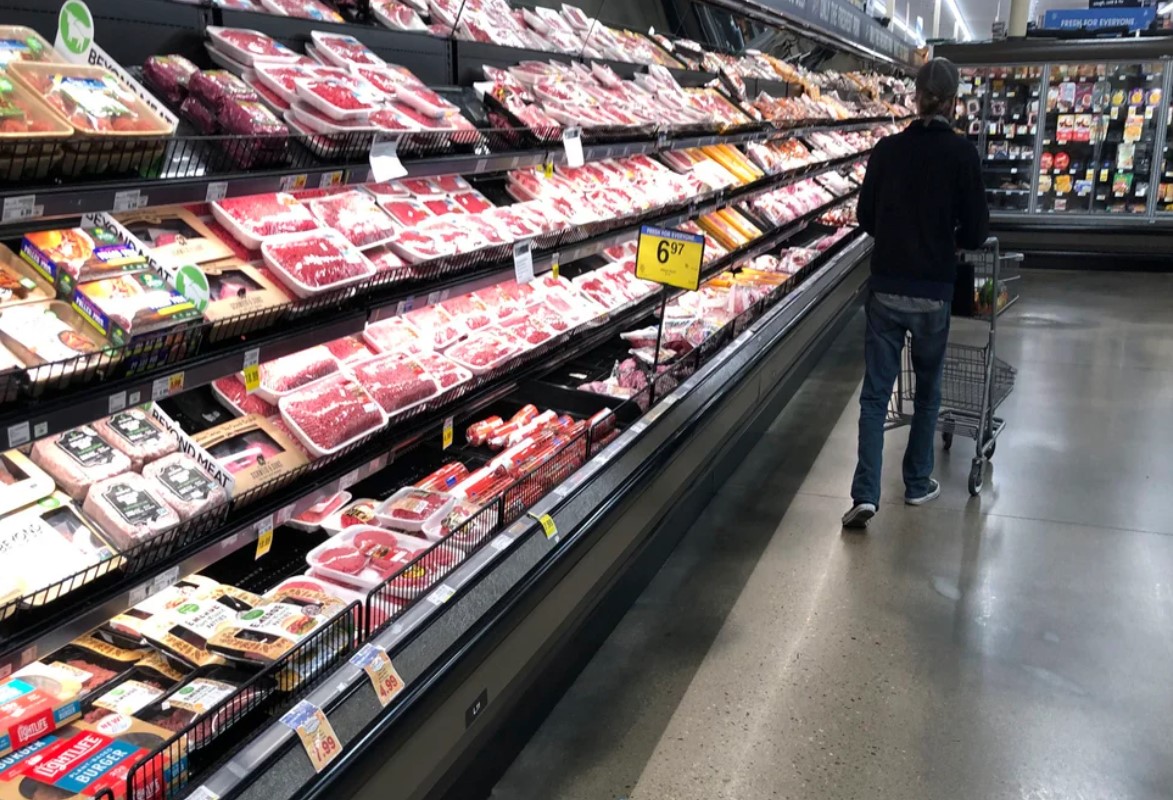The US wholesale inflation rate rose to 2.2% in September, the highest level since April, as the cost of goods increased amid supply chain disruptions and rising demand. The Labor Department reported that the producer price index (PPI), which measures inflation before it reaches consumers, climbed 0.5% from August to September, down from 0.7% from July to August.

Wholesale Inflation Outpaces Consumer Inflation
The wholesale inflation rate of 2.2% in September was higher than the consumer inflation rate of 1.7% in August, which was the smallest increase in nearly two years. This suggests that producers are facing higher costs than consumers, and may eventually pass them on to customers.
The core PPI, which excludes volatile food and energy prices, rose 2.7% in September from a year earlier and 0.3% from August. The core consumer price index (CPI), which also excludes food and energy, rose 1.3% in August from a year ago and 0.1% from July.
The Federal Reserve and many economists pay close attention to the core inflation measures, as they are considered a better indicator of underlying inflation trends. The Fed has a target of 2% for annual inflation, but it uses a different measure called the personal consumption expenditures (PCE) price index, which tends to run lower than the CPI and PPI.
Goods Prices Drive Wholesale Inflation
The main driver of the wholesale inflation in September was the increase in the prices of goods, which rose 1% from August and 4.4% from a year ago. Within goods, the prices of energy products jumped 5.1% from August and 16.5% from a year ago, while the prices of food products rose 0.7% from August and 3.8% from a year ago.
Some of the goods that saw significant price increases in September were:
- Gasoline, up 9.6% from August and 32.8% from a year ago
- Diesel fuel, up 9.4% from August and 28.6% from a year ago
- Jet fuel, up 8.9% from August and 34.4% from a year ago
- Iron and steel scrap, up 8.6% from August and 40.6% from a year ago
- Beef and veal, up 5.9% from August and 12.8% from a year ago
- Pork, up 5.6% from August and 10.4% from a year ago
- Eggs for fresh use, up 12.4% from August and 19.9% from a year ago
The prices of services, which make up more than two-thirds of the PPI basket, rose 0.2% from August and 1.5% from a year ago. Within services, the prices of transportation and warehousing services increased 0.7% from August and 4.3% from a year ago, while the prices of trade services, which measure the margins of wholesalers and retailers, fell 0.2% from August and rose 0.9% from a year ago.
Wholesale Inflation Reflects Supply Chain Issues and Rising Demand
The surge in wholesale inflation in September reflects the ongoing challenges faced by producers amid supply chain disruptions caused by the COVID-19 pandemic, natural disasters, labor shortages, and geopolitical tensions. These factors have created bottlenecks in the production and distribution of goods, leading to higher costs and lower availability.
At the same time, the demand for goods has been rising as consumers have increased their spending after receiving stimulus checks, tax refunds, and enhanced unemployment benefits. The reopening of businesses and schools has also boosted the demand for goods such as clothing, furniture, electronics, and vehicles.
However, some analysts expect that the wholesale inflation pressures will ease in the coming months as supply chains improve and demand moderates. They also note that some of the price increases are due to base effects, meaning that they look higher because they are compared to low levels a year ago when the pandemic hit the economy hard.
Wholesale Inflation Implications for Monetary Policy
The higher-than-expected wholesale inflation in September may raise concerns about the outlook for consumer inflation and economic growth. The Fed has been maintaining an accommodative monetary policy stance since March 2020, when it slashed its benchmark interest rate to near zero and launched massive bond-buying programs to support the economy during the pandemic.
The Fed has signaled that it will start tapering its monthly asset purchases of $120 billion by the end of this year, but it has not given a clear timeline or criteria for doing so. The Fed has also indicated that it will keep its interest rate near zero until the labor market reaches full employment and inflation stays above 2% for some time.
The Fed has repeatedly stated that it views the current inflation spike as transitory, driven by temporary factors that will fade as the economy recovers from the pandemic. The Fed has also stressed that it will not overreact to short-term inflation fluctuations, but rather focus on the long-term inflation expectations and trends.
However, some market participants and economists have expressed doubts about the Fed’s inflation outlook, arguing that the inflation pressures may persist longer than expected and force the Fed to tighten its policy sooner and faster than anticipated. They point to the rising wages, rents, and commodity prices as signs of sustained inflationary pressures.
The wholesale inflation data for September may add to these doubts and increase the uncertainty about the Fed’s policy path. The market will closely watch the consumer inflation data for September, which will be released on Thursday, as well as the Fed’s next meeting on November 2-3, for any clues about the Fed’s inflation assessment and policy plans.







